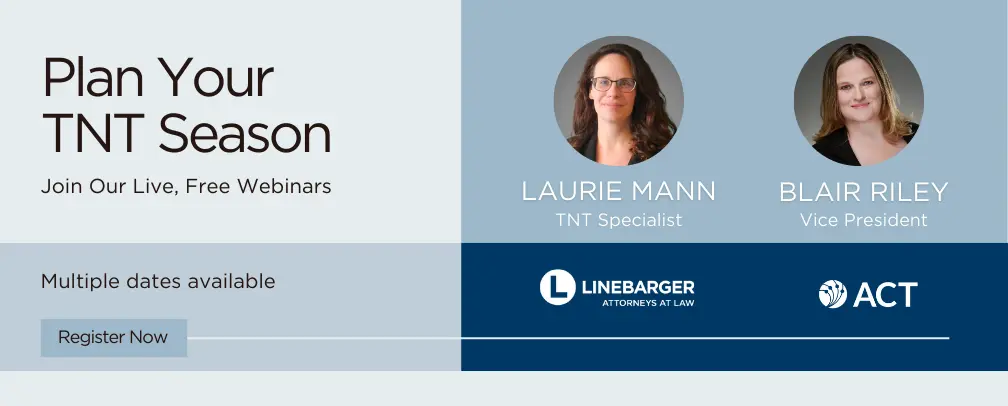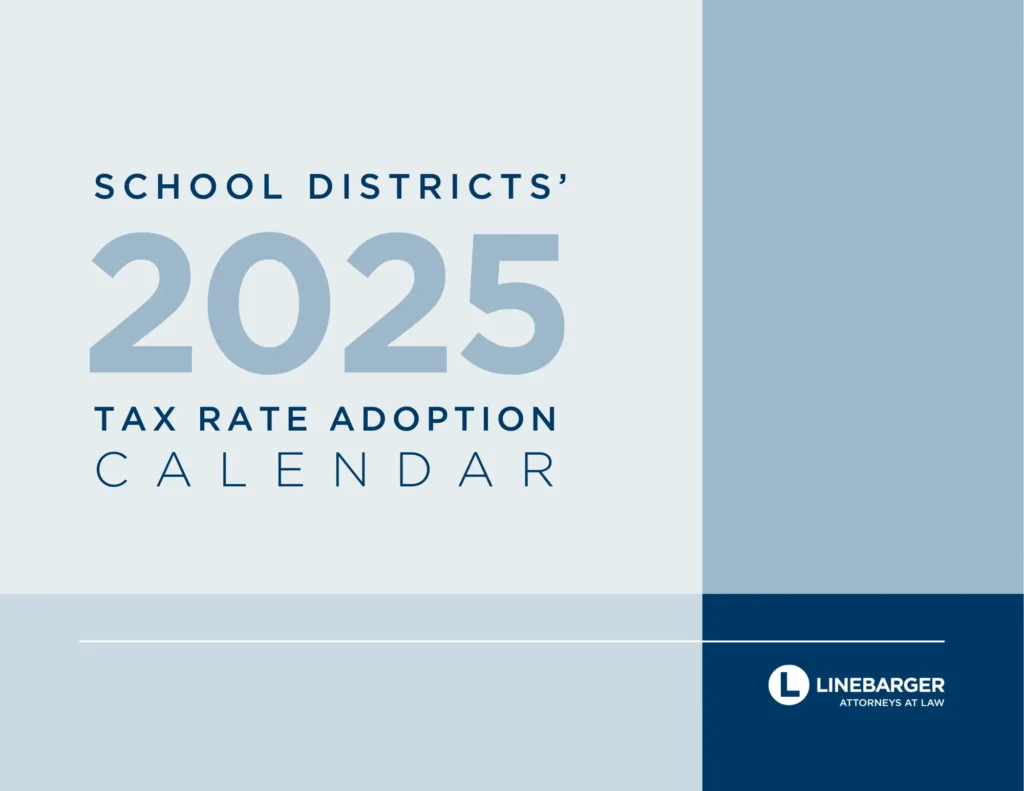TNT Essentials: 4 Steps to Stay Compliant
May 12, 2025
By Laurie Mann, TNT Specialist

Truth-in-Taxation (TNT) season is right around the corner—and getting it wrong could trigger legal action and even halt your district’s tax rate adoption. But with the right planning, your team can stay ahead of the deadlines, avoid mistakes, and make smarter decisions.
We can help you navigate TNT season with our free training webinars in June and July. Register here.
Focus on these four essential steps to ensure compliance this TNT season.
Use TEA’s MCR—Don’t Finalize Without It
By August 5th each year, the Texas Education Agency (TEA) releases the maximum compressed rate (MCR) for districts based on state property value growth or local property value growth. At this time, districts should update all budget and tax rate spreadsheets and other documentation with TEA’s MCR and should not finalize their budget or tax rate calculations without confirming that they are using the TEA-determined MCR.
As MCRs decrease, the tax ceiling for those homesteads with homeowners who are 65 or older or disabled will also decrease. As a result, the revenue from frozen levy can be lower than expected.
This year, the frozen levy may be even lower if the Texas Legislature passes a bill that allows for additional rate compression and/or increases in the homestead exemption starting in 2025.
Districts should conservatively estimate the revenue from frozen homesteads.
Account for Adjustments When Setting Debt Rate
The current legislative session is focusing on the debt side of the tax rate, considering bills that would limit the total amount of debt a district could assume or that would allow districts only the minimum dollar in debt service, i.e. no paying debt down early.
If your district is exploring an increased debt service to be paid for a given year, it is good practice to retain the calculations justifying the increased debt service and how it ties to paying debt down early.
When calculating the debt rate for the current year, remember that there are two adjustments not in the district’s control: excess collections and the anticipated collection rate. These are certified by the tax collector and can potentially lower the calculated debt rate. Talk with the district’s tax collector about these items when estimating your debt rate for the current year.
Use the Right Forms for Your Budget Notice and Complete Hearing Requirements
School districts are required to publish a quarter-page notice of their budget/rate meeting at least 10 days before the meeting (but not more than 30 days) in their local newspaper.
Districts must use the Comptroller’s form 50-280, Notice of Public Meeting to Discuss Budget and Proposed Tax Rate.
The Tax Code uses the Rate to Maintain as a trigger for hearing requirements. The Rate to Maintain is the tax rate needed to maintain the same level of state and local revenue per weighted student that a district received in the previous year. Here are a few examples of the impact of Rate to Maintain.
- If the proposed tax rate exceeds the Rate to Maintain, then the rate must be adopted by record vote and approved by at least 60 percent of the governing body.
- If the district is proposing a M&O rate that will increase the M&O levy and exceeds the Rate to Maintain for M&O purposes, the code requires the district to include specific language in the resolution adopting the tax rate and to post that language on the district’s website.
The Tax Code uses the No-New-Revenue Rate as well, including:
- If the district proposes a rate above the no-new-revenue rate, then certain motion language must be used when adopting the rate. No-new-revenue rates are calculated on the Texas Comptroller’s worksheets.
- Remember: If the district misses its statutory tax rate adoption deadline, then the rate for the year will be the no-new-revenue rate or last year’s rate, if that rate is lower.
TIP: Download our free TNT planning calendar to avoid last minute scrambles.
These TNT notices and hearing requirements are sometimes harder to complete than the voter-approval tax rate calculation. ACT provides software that can automate these requirements. Talk to your local tax office or email ACT TNT to learn more.
Post the Right Information Online
The Tax Code requires districts to post the notice of estimated taxes on their website. Coordinate with your appraisal district to determine if the district can use the same version as the appraisal district.
Districts are also required to post:
- Contact information
- Governing body members
- Budgets and tax rates (M&O and I&S) for the last two years
- Current budget (with the percent and dollar change from last year)
- Latest financial audit
- Proposed M&O and I&S tax rates*
*If the district will increase the M&O levy from last year, it must publish specific language.
If the proposed M&O rate is greater than the Rate to Maintain for M&O purposes, then these districts must also post a similar statement to the required resolution language.
Summary
Both the Texas Legislature and the voters are focused on the Truth-in-Taxation process. Here are some good practices to follow:
- Confirm your MCR from TEA (by Aug 5).
- Estimate frozen levy conservatively in legislative years. Any additional tax rate compression and/or increased homestead exemptions decrease the ceiling and therefore, revenue from these properties.
- Discuss the impact of excess collections and the anticipated collection rate on the debt rate with your collector. Document how early debt retirement impacts your debt rate.
- Use software to calculate rates and generate notices and language for the website and resolution.
- Track key deadlines using our TNT planning calendar.
Join Our Free Webinars
June and July Sessions Scheduled. Hosted by ACT VP Blair Riley and TNT Specialist Laurie Mann Register here.

Laurie Mann is Linebarger’s Truth-in-Taxation Specialist and has more than 16 years of experience with TNT regulations, having served as a policy advisor for the Comptroller of Public Accounts for more than a decade.
This content is intended and provided solely for educational and/or informational purposes. It is not intended to provide legal advice, nor does your receipt of this content create an attorney-client relationship. This content is not a substitute for the specific legal advice of an attorney licensed in your jurisdiction.
If you are a current or prospective client this content may be subject to the attorney-client privilege or the attorney work product privilege or otherwise be confidential. Any dissemination, copying or use of this content by or to anyone other than the designated and intended recipient(s) is unauthorized.
